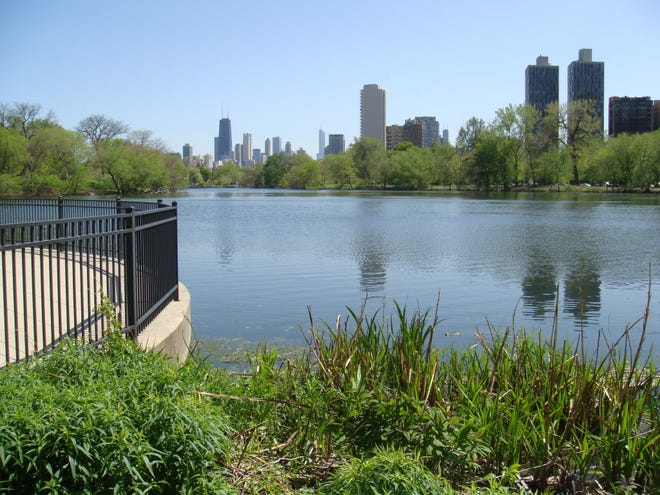The best bird watching in Windy City Chicago
4 min read
Along Lake Michigan, Chicago’s landmark skyline, seashores and parks not only bring in tens of millions of site visitors annually, but also thousands and thousands of birds, specially during spring and fall migrations. The city ranks as just one of the leading hen-watching destinations in the state mainly because of its abundance of clean water and place on the Mississippi Flyway, just one of four key migratory chicken routes in North America.
“During migrations, Chicago draws in some of the greatest numbers of numerous hen species in the state for the reason that they halt here to relaxation and feed in the city’s open up, green spaces in advance of continuing their journeys,” suggests Judy Pollock, president of the Chicago Audubon Society.
Much more than 350 fowl species have been spotted in Chicago through yearly migrations. They go as a result of even though flying from the Gulf of Mexico, Caribbean, Mexico and Central and South The united states to their breeding grounds in the northern U.S. and Canada.
In spring, unusual species seen in Chicago contain piping plovers, Kirtland’s warblers, bobolinks, whimbrels and American avocets. Throughout fall migration, birds, which include countless numbers of hawks, halt right here ahead of heading south.
The city’s bird-welcoming community lands are absolutely free to enter. Quite a few are obtainable by means of general public transportation and the city’s extensive bicycle path network. Website visitors can join guided walks and instructional applications hosted by birding groups and character centers.
Lakefront sizzling places
“Some of Chicago’s 613 parks defend globally exceptional purely natural locations, these kinds of as dunes on the lakefront, as perfectly as prairies, wetlands and oak savannas representative of indigenous landscapes located in Illinois ahead of 1400, which is pre-European settlement,” says Matt Freer, Chicago Park District assistant director of landscape, cultural and purely natural assets. According to Freer, 361 chook species have been sighted in the 15-acre Montrose Issue Chicken Sanctuary in Lincoln Park on Chicago’s North Facet.

Just just after dawn, when birds are most active, birders flock to the sanctuary in spring to see as quite a few as 35 species of vibrant warblers flit all-around the dense thicket of honeysuckle shrub called the “magic hedge.” The thicket flanking a paved path looping by way of the park was planted to camouflage Military barracks, now gone, on the previous Cold War Nike missile internet site. In the sanctuary’s shielded dunes, a pair of unusual piping plovers that regional birders named Monty and Rose return on a yearly basis to nest.
The Fort Dearborn Chapter of the Illinois Audubon Society conducts no cost chook walks in the sanctuary and other pure sites all over Lincoln Park. Mark Luscombe, the chapter’s president, says, “You’ll listen to the birds ahead of recognizing them. Based on their ambitions, chook species use numerous vocalizations to communicate migratory locale, bring in mates and stake out territory.”
Luscombe’s other preferred Lincoln Park birding places are the Bill Jarvis Migratory Bird Sanctuary and North Pond Character Sanctuary. He recommends introducing young ones to birding through the Peggy Notebaert Character Museum and checking out nearby Lincoln Park Zoo, wherever a colony of as lots of as 400 black-crowned night time-herons nest per year.
Northerly Island Park urban character sanctuary south of Adler Planetarium on the Museum Campus, after the web-site of the 1933 Century of Development World’s Truthful, was reworked into a wetlands habitat, and now attracts migrating bobolinks, Iceland gulls, snowy owls, brant geese, terrific black-backed gulls and surf scoters.

On the city’s South Facet, birders head to Wooded Island in 543-acre Jackson Park, made by landscape architect Frederick Legislation Olmstead as component of the 1893 World’s Columbian Exposition fairgrounds. Far more than 280 chook species repeated the lush lagoon landscape, together with unusual migrating cerulean warblers, Brewer’s sparrows and merlins.
Don’t overlook forest preserves
Not all migratory birds continue to be on the lakefront. A lot of choose to fly inland to rest in the Forest Maintain District of Prepare dinner County’s 70,000 acres of purely natural river systems, wetlands, oak savannas and forest habitats.
On the city’s northwest facet, the 80-acre LaBagh Woods maintain welcomes more than 200 migratory bird species. The 20-mile, multiuse North Department Trail Process qualified prospects to the Chicago Botanic Yard, yet another nationally known birding warm spot.
Jessica Becker, a mother nature programming specialist with the Prepare dinner County forest protect, says, “Many men and women affiliate wildlife with open, sprawling environments having said that, the variety of migratory hen species in forest preserves within Chicago’s densely populated urban places is really outstanding. Their existence signifies the quality of the organic natural environment.”






